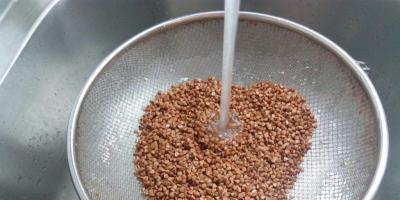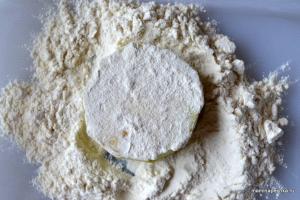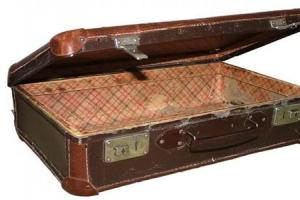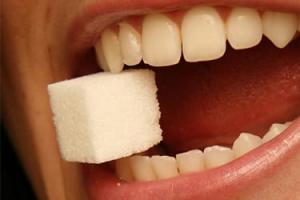An air humidifier helps create and maintain a favorable atmosphere in the home. It fills dry air with the necessary moisture, which has a positive effect on both our well-being and performance. To ensure uninterrupted and high-quality operation of the device, it is necessary to carefully care for it. Let's look at how you can clean a humidifier at home.
Cleaning your humidifier is an essential part of a comprehensive procedure for maintaining its performance. The reason for contamination lies in the very principle of operation of the device and depends on the version of the selected model.
Steam humidifiers work in a similar way with electric kettle– During the boiling process, water is converted into steam. Combining with air, steam significantly increases its humidity. When boiling, however, salts and other mineral compounds do not evaporate, but are deposited, forming a hard limescale deposit on the heater.
Plaque is not just an aesthetic nuisance; its presence significantly affects the performance of the device, reducing its heating function and contributing to breakdown.

The operating principle of ultrasonic devices is somewhat different. Special membrane through generated ultrasonic vibrations breaks the water on small particles that mix with the surrounding air, salts are deposited both on the surfaces of the room (walls, furniture) and on internal parts.


The mechanical version of the humidification device works by creating an air flow based on contact with moistened cartridge, forming the process of moisture evaporation. Again, all the mineral salts remain in the cartridge, it becomes clogged and, as a result, the device fails.
Cleaning procedure
Regular cleaning
If you use your humidifier regularly, you should clean it at least once a week, wiping and removing deposits. The procedure begins by pouring out the remaining water from the container and thoroughly drying the device. Try to avoid direct sunlight.
It is best to avoid the use of chemical detergents and cleaners, since small particles of such preparations can subsequently spread throughout the room, negatively affecting both the condition of surfaces and the well-being of family members.
There is a certain set of special products that can be recommended by manufacturers for cleaning; they can be used in case of severe contamination.


Baking soda is used to get rid of unpleasant odors and remove small stains. Serious contamination can only be done with special solutions and powders; you may need metal sponge. Since the likelihood of damage to the device body is high, you should not abuse this product; it is better to prevent the appearance of serious deposits through preventive cleaning.
The nozzle of the device is regularly covered with scale, which must be removed. When answering the question of how to clean a humidifier from scale, do not forget that under no circumstances should you use harsh cleaning agents; they can damage the nozzle and subsequently require an expensive repair procedure. As a rule, special means are used, which can also be quite successfully replaced vinegar solution: moisten the swab and wipe the nozzle with it. After this procedure, you can fill the humidifier with water and start it up.
To prevent the proliferation of various kinds of microorganisms, use a chlorine solution. After using it, be sure to rinse the device under running water.
Cleaning a humidifier from mold
There are several ways to clean a household humidifier from mold:
- Using bleach or bleach solution. A teaspoon of chlorine or bleach is diluted with 4.5 liters of water and poured into the tank. The solution remains in it for an hour, after which the tank is thoroughly rinsed with running water.
- Using vinegar. 4-4.5 liters of water are diluted with a glass of vinegar and left in the operating device for an hour. To avoid a strong odor, it is recommended not to perform this procedure at home. As a last resort, after it is carried out, you need to ventilate the room well.
- Peroxide. Several glasses of the solution are poured into a container and left in it for an hour. The peroxide should completely cover both the bottom and the walls.


To prevent mold, you need to clean your humidifier. soda and lemon at least once a week, and also use distilled or well-filtered water during operation of the device.
How to clean a Boneco humidifier
Let's look at the cleaning procedure for well-known models from Boneco.
The manufacturer advises using a special cleaning composition that requires dilution in warm water in the proportion of 1 packet per 1 liter.
The procedure itself goes as follows:
- The device is cleared of any remaining liquid.
- Part of the prepared solution is filled into the tank, and part - into the lower compartment of the device.
- The tank cleaning procedure is carried out using a soft brush.
- The lower compartment does not need to be touched for 3-5 hours.
- Wash both components - the tank and the lower compartment - with running water.
- The device is assembled and put into operation.
As you can see, cleaning a humidifier from plaque, mold and scale is not such a difficult task that anyone can handle on one's own. Of course, you can turn to specialized service centers for help, but their services can cost you a fairly large sum, equal to a third of the cost of the device itself. Whether it is worth overpaying in this case is up to you to decide.
Whatever decision you make regarding the choice of method for servicing the device, remember that only high-quality prevention of serious contamination through regular flushing of the system can ensure long-term operation and a high level of functionality provided.
Show content articles
The modern device is designed to create an ideal microclimate in the apartment. An air humidifier effectively protects mucous membranes from drying out in high temperatures. This device is suitable for families with children who often catch colds in the summer.
How humidifiers work
The durability of the device directly depends on proper and timely maintenance, as well as use in accordance with the instructions. All models are divided into four main types:
Healthy! The most popular device among its analogues is the ultrasonic unit. It qualitatively moisturizes the room and perfectly decorates the home interior with its unique design.
What can cause a humidifier to become dirty?
 During operation, the device requires constant maintenance. If the unit is not cleaned, this factor can lead to rapid failure of the humidifier itself. Contamination occurs for the following reasons:
During operation, the device requires constant maintenance. If the unit is not cleaned, this factor can lead to rapid failure of the humidifier itself. Contamination occurs for the following reasons:
- High level of water hardness. Tap liquid contains magnesium and calcium salts, which provoke the formation of limescale on the surface of the container and working elements. During operation of the device, unfavorable compounds can enter the air, thereby deteriorating its quality;
- Improper maintenance of the unit. When using high-quality purified water, the device will become dirty if it is not cleaned from the inside. When moisture stagnates and oxygen is not supplied, a favorable environment is formed in which microorganisms begin to multiply;
- Poor quality water. Liquid from the water supply contains impurities and pathogenic bacteria that cause blooms and mold formation. Such microorganisms, when sprayed with water around a room, can enter the human respiratory tract.
How to descale a humidifier: products and instructions
 Timely treatment of the device will help protect it from the formation of a complex plaque crust. To carry out hygienic procedures, it is necessary to disconnect the device from the power supply and allow it to cool completely. The liquid reservoir should be removed, emptied of water and proceed with step-by-step cleaning:
Timely treatment of the device will help protect it from the formation of a complex plaque crust. To carry out hygienic procedures, it is necessary to disconnect the device from the power supply and allow it to cool completely. The liquid reservoir should be removed, emptied of water and proceed with step-by-step cleaning:

A clean device is wiped with a soft fiber towel and left until completely dry.
Important! To clean the air humidifier, it is prohibited to use products intended for dishes, bathtubs, and toilets. They contain components that destroy the device.
How often should you clean?
Cleaning the unit is an integral part of its operation to extend its service life. The causes of contamination are quite different, it depends on the type of selected specimen and the principle of its operation.
If you use the device regularly, you must wipe it thoroughly and remove salt deposits every week. With timely care, such procedures do not take much time, because scale does not form a thick layer.
 If used regularly, remove salt deposits every week
If used regularly, remove salt deposits every week
What will help against mold, mucus and greens
Such problems can be eliminated by disinfecting the device, which is carried out in three ways:
- Chlorine solution. 1 teaspoon per 4.5 liters of water, the reagent is thoroughly mixed and poured into the tank. The liquid remains in the container for an hour, after which it is drained and washed off well under water;
- Vinegar. A glass of this liquid is poured into water with a volume of 4.5 liters, the solution is placed in the container of the unit, and with this mixture it is in working condition for 1 hour (ultrasonic devices are cleaned when turned off). This process must be carried out in an open space or well-ventilated area;
- Peroxide. 2 glasses are poured into the tank and the liquid remains for an hour. The pharmaceutical preparation should cover the bottom and walls of the device.
These methods will help you effectively get rid of mold, mucus and green growth.
Disinfecting the humidifier
 You can prevent the appearance of unfavorable fungi, bacteria and other microorganisms using chlorine-containing products. The most popular bleaches are:
You can prevent the appearance of unfavorable fungi, bacteria and other microorganisms using chlorine-containing products. The most popular bleaches are:
- You need to fill the tank with water and add 1 teaspoon of the product;
- the device remains in this state for one hour;
- at the end of the allotted time, it is thoroughly washed under running water, leaving it in working condition for about 1 hour;
- Afterwards, the tank should be rinsed again, and it is ready for the work process.
Prevention measures
In order for the humidifier to have a long service life, you need to follow preventive measures, and they are as follows:

It is important to remember that by providing the device with proper maintenance, you can not only extend its service life, but also create favorable conditions for the effective operation of the humidifier.
Watch a video on how to properly clean a humidifier
It is difficult to underestimate the benefits of industrial climate control devices designed to increase the level of humidity in a residential area. Unfortunately, you won’t be able to simply buy a device and enjoy the benefits of civilization; you will have to at least familiarize yourself with the methods of how to clean an air humidifier from limescale.
Refusal to carry out preventive and restorative manipulations is fraught with serious problems, the least of which will be a decrease in the performance of the device. Of course, you can turn to a professional who will do everything correctly and quickly, but in this case you will have to shell out at least a third of the amount already paid for household appliances.
Causes and consequences of pollution of climate control equipment
Today, the household appliance market is filled with various types of humidifiers. The type of their work affects not only the condition of the air and its physical indicators, but also causes the development of specific problems:

- Steam installation. In the process of generating steam, which is mixed with air, active separation of salt molecules from particles suspended in the atmosphere occurs. They settle on the internal walls and elements of the device, causing scale formation. As the lime layer compacts, the thermal conductivity of the device decreases, which affects the quality of its operation. After some time, the device fails.
Advice: To avoid such consequences, it is worth taking a closer look at devices in which the evaporation of liquid occurs not during the boiling process, but at room temperature.
- Ultrasonic humidifier. Through the action of ultrasound, the surface of the water releases wet dust, the particles of which are so small that they take on the appearance of a cool fog. While water molecules mix with air components, salts are separated, settling on various horizontal and vertical surfaces. The whitish coating does not look very aesthetically pleasing and creates problems during the cleaning process. After some time, it begins to appear on the internal parts of the humidifier.
- Traditional mechanical device. In this case, the main load falls on the moistened cartridge, which becomes covered with a salt coating as a result of constant filtration of hard water. In addition, these devices are characterized by stagnation of water in the tank, which leads to the active proliferation of pathogenic microorganisms and the appearance of a putrid odor from the installation.
- Comprehensive air washing. In this case, you may encounter all of the problems listed - from limescale to whitish deposits. Such structures are quite difficult to wash and clean, but this must be done regularly.

The frequency of processing of functional products will be significantly reduced if filtered or distilled water is poured into their tanks, filters are regularly inspected and replaced, and the liquid used is changed more often. At the same time, it is forbidden to unnecessarily run the device at full power and remove limescale build-up with sharp objects.
How to properly descale a humidifier or air washer?
Removing dirt, scale or deposits may differ in certain specifics depending on the humidifier model, but the basic recommendations are the same everywhere:

- First, the device must be de-energized, freed from liquid and, if possible, disassembled into its components.
- The main container is washed in warm water using a soft cloth. Standard household chemicals are not used in this case, because... their residues are very difficult to wash out, and they will begin to get into the air when the device is connected.
- If such an effect does not give the desired result, you will have to use specialized preparations recommended by the humidifier manufacturers themselves. As a last resort, the use of citric acid or soda is allowed, but no aggressive pastes or abrasives with large particles.
- The case can be wiped with a very weak solution of vinegar, this will reduce the amount of dust settling on the product.

If, after such manipulations, traces of plaque or scale remain on certain parts of the container, it is better to contact a specialist. Such a dense limestone layer can quickly damage the device, so in some cases it is necessary to replace functional elements.
How to properly disinfect the device?
Simultaneously with cleaning, it is recommended to carry out several manipulations aimed at eliminating microbes on the walls and elements of the humidifier. Neglecting this stage increases the risk of developing allergies, fungal and infectious diseases among residents of the house.

The required result is achieved by performing one of the following actions:
- Cleaning with bleach. Fill the working container with cool water, add a teaspoon of chlorine bleach to it and leave for about an hour. After this, pour out the composition and thoroughly rinse all elements with which the product came into contact. If the humidifier has impressive dimensions, then it is recommended to increase the exposure period by half an hour; the concentration of the product does not change.
- Peroxide cleaning. Fill all internal elements of the device with 3% peroxide. There is no need to add water, such an effect will be enough. After an hour, wash off the liquid and rinse the container thoroughly.
- Cleaning with vinegar. We carry out the procedure only in the fresh air. Pour a glass of vinegar into the tank of the device and add water to the standard level. We start the unit in standard mode and keep it like that for at least an hour. After the specified time, wash off the liquid and rinse the product with plenty of water.
An air humidifier creates a comfortable microclimate in the room, preventing many diseases and relieving flu symptoms. Such devices have a beneficial effect on people's health, but quickly become dirty.
You won't be able to simply buy a humidifier and enjoy it. You will have to familiarize yourself with information on how to care for the device. The level of humidity in the house, as well as the health of the family, depends on the cleanliness of the tank and filter.
Why is the device needed?
Too dry or humid air negatively affects the health of household members and the condition of furniture.
It is important to control the humidity level in your home. It is recommended to keep it at 30-50% to avoid health problems.
The main benefit of a humidifier is to help combat dry air, which can cause the following problems:
- dry eyes;
- a sore throat;
- dry nasal passages and even bleeding;
- colds and flu become more common;
- the skin on the hands and lips cracks;
- allergy symptoms worsen;
- asthma worsens;
- skin itches;
- Wood furniture and flooring can crack and break.
With the help of humidification, the air becomes purified. It contains more moisture, so such health problems no longer occur.
Humidifier benefits:
- The baby's skin will not crack. Dry air can also aggravate eczema and other chronic skin conditions. Adequate moisture helps the baby fight such diseases and also improves overall health.
- At night the children sleep peacefully. If the air is dry, the child will constantly have a stuffy nose and a morning cough.
- Helps adults and children recover faster from colds and flu. A humidifier relieves symptoms of respiratory diseases. It “lubricates the nasal passages,” making it easier to breathe. It also helps relieve sore throat.
- Using a humidifier in combination with a high-quality room purifier can improve asthma symptoms.
- The health of your hair depends on the humidity in the room. The skin on the scalp becomes irritated and dry, itchy and flaky if the air is dry. With a sufficient level of humidity, the hair ceases to be brittle and dry, it begins to “breathe and live” again.
- Humid air reduces static electricity. If it is dry, sparks will occur when it comes into contact with animal fur or knitted items.
- Moist air is beneficial for indoor plants. To survive and bloom they need water from the soil and air.
This device is a must for every home. It brings many benefits both to the house itself and to its inhabitants.
Why clean?
Using this technique, you need to know how to clean it correctly and why it should be done.

Regular cleaning will not only prolong the life of your humidifier, it will prevent any leakage into the air.
What is important to know:
- Use distilled or demineralized water. Tap water contains minerals that promote mold growth. If possible, it is better to buy filtered water.
- The fluid should be changed daily. Standing water can lead to mold.
- Regular cleaning. To avoid the penetration of harmful microorganisms into the air, which subsequently lead to various diseases, it is necessary to clean the humidifier every week. Clean the interior regularly with disinfectants.
- Don't forget to change the filter. Not all humidifiers have this component, but if they do, you should change it as often as the manufacturer recommends. If this is not done, mold and bacteria will get into the air.
It becomes clear that dry air and lack of cleaning can affect the health of household members.
No matter what type of device you have (ultrasonic, air filter or steam), it needs to be washed weekly.
Soap solution
Timely hygiene procedures will prevent the formation of limescale.

The use of a professional cleaning product is not recommended. Subsequently, harmful chemicals will be released into the air.
You can wash the plaque inside using a regular soap solution at home, and if you carry out the procedure at least once a week, you can.
How to clean a humidifier?
First, you will need to disconnect it from the network. Then rinse the emptied tank of water.
Cleaning the humidifier from scale:
- Prepare a concentrated soap solution. You can use shavings of laundry soap or dish detergent.
- Soak a cloth or brush in the foam solution and treat the inside of the container. If there is no residue, use a cloth, and if the dirt cannot be washed off, use a brush. You can replace the brush with a toothbrush or the hard side of a kitchen sponge (just use a new one).
- When rubbing, do not put too much pressure on the tank; it is not advisable for scratches to form on it.
Do not use bath or toilet cleaners as cleaning agents. They are too aggressive and can destroy the device.
Hydrogen peroxide
You can also wash the tank with peroxide. This product is cheap and cleans well.

Use hydrogen peroxide to disinfect the container. It just needs to be diluted before use.
How to clean a humidifier with peroxide? The question is relevant and of interest to many device owners.
Algorithm of actions:
- First, clean the tank with soapy water and rinse with clean water.
- In a container, dilute hydrogen peroxide (1 tsp) with 1 liter of water.
- Close the device and connect to the network. The device needs to work a little. This will clean not only the tank, but also other components of the device.
- When steam appears, immediately turn off the device. Do not pour out the solution; leave it in the tank for a couple of minutes.
- Then empty the device and rinse with warm water.
- Hydrogen peroxide is difficult to clean off the first time. Therefore, fill in distilled water a second time and repeat the procedure, just let the device work for 3-5 minutes.
- Then empty the tank again and rinse with clean liquid.
Distilled water should also be used for washing. All that remains is to dry the humidifier in a well-ventilated area.
If the device requires general cleaning, do not rush to take it to the workshop. Try cleaning it yourself using table vinegar.

How to clean your humidifier:
- Prepare a solution that is not too concentrated. Pour 1 tsp into 1 liter of distilled water. vinegar.
- First, the device is washed with soapy water and rinsed to remove some dirt and prepare for the procedure.
- Then wipe the device with a cloth soaked in a vinegar solution.
- Leave the product to work. A few minutes will be more than enough.
- Then rinse the reservoir and other parts of the humidifier with clean water.
- Wipe the device with a dry soft cloth.
After such treatment, it will come out of the reservoir. You can get rid of it if you leave the device on the balcony or take it outside into the shade.
The device must be well ventilated. This may take several hours.
Chlorine
You can clean the humidifier from scale and mold with a chlorine solution. This treatment is not recommended for use more than once every 2 weeks. After all, chlorine is a chemical.

How to clean your humidifier:
- Prepare the solution. Pour 4.5 liters of distilled water into another container and add 1 tsp. chlorine Mix the solution well.
- Pour some into the humidifier reservoir. Do not plug in the device, just leave the solution to work for a while. 1 hour will be enough for mold and harmful microorganisms to die and scale to weaken.
- Rinse the tank with clean water. It is advisable to rinse the humidifier container several times.
After chlorine treatment, an unpleasant odor may also come from the device. Therefore, the tank needs to be ventilated.
The frequency of cleaning depends on how hard the water you use when using the humidifier. But it is recommended that you adhere to these recommendations and not carry out this procedure more often than required.
A safer cleaning method is to use lemon soda or citric acid. Both products are safe for the health of household members.

How to clean it properly:
- Prepare a concentrated solution. Add 4 tbsp per liter of water. l. citric acid or juice of one citrus and 1 tbsp. l. soda
- Pour the resulting solution into the reservoir and turn on the device. The device should work for an hour. This way, not only the tank is cleaned, but also the filter.
- Finally, turn off the appliance, wait 30 minutes, and begin descaling.
This method is suitable for mechanical type devices.
Ultrasonic devices do not need to be turned on. Just pour the prepared solution inside and leave for a couple of hours. During this time, the scale will soften and it will be easier to wash it off.
When cleaning the humidifier, take it to the balcony or outside. The second option is to leave the premises for several hours.
Timely cleaning will not only protect household members from respiratory tract diseases, it will protect the device from the formation of a strong plaque crust.
There are many products you can use as cleaning products at home. The main thing is to follow the proposed algorithm of actions and not overdo it with washing.
- Hard brushes cannot be used on the membranes of ultrasonic devices. Wash the device with the accessories included in the kit.
- Do not allow cleaning solutions to penetrate into the devices.
- Before assembling the parts, you need to dry them well or wipe them with a soft, dry cloth.
- Instead of soda, citric acid, chlorine and vinegar, you can use special cleaning products to remove scale from kettles. They disinfect and quickly remove limescale. Chlorine can be replaced with bleach, but they should not be mixed together, as they will release dangerous fumes that are harmful to health.
- You cannot clean with soda or citric acid alone. Be sure to dilute with water. These are powdery substances that can scratch the tank.
These tips will help you solve the problem of how to properly clean your humidifier.
Do not wait until the coating hardens and the tank is covered with a thick crust. Take a little time and clean the device in a timely manner to avoid problems with the device in the future.
Humidifiers are healthy climate control equipment. They soften the nasal mucosa, prevent the development of viral diseases, take care of the safety of furniture and wooden floors, and establish the necessary humidity in the room during the heating season. To maximize the benefits of this equipment, it is important to clean it regularly.
How to clean a humidifier - why contamination occurs
The modern market for household appliances is replete with variety. Not only the state of indoor air and physical parameters, but also the causes of pollution depend on the model of equipment.
- Steam device. Water droplets in such installations are supplied by generating steam. When water boils, salts are separated from water molecules and settle on the walls. This causes scale to form inside the humidifier. As a result, its performance deteriorates significantly.
- Traditional installation option. The main load in this model of the device falls on the cleaning filter, which passes water through itself. It is on this that salts in the liquid settle, and the water is poorly filtered. Also, the cause of the proliferation of harmful bacteria and the rotten smell from the operation of the humidifier is stagnation of water in the tray.
- Ultrasonic device. In such humidifiers, moist dust is artificially created in the form of fog. Water splits into small particles, and salts settle not only on the outside of the equipment, but also inside. A white coating forms, which is difficult to remove from the surface.
- Comprehensive humidifier model. It includes several air humidification technologies at once, and with them all the above-mentioned cleaning problems.
How to descale a humidifier
Depending on the model of equipment, the cleaning process may vary, but the main stages of descaling are the same.
- Disconnect the device from the power supply. Pour out all the water, especially from the tray. Disassemble the equipment into its component parts as much as possible.
- Wash the main tray in warm water using a soft cloth. Detergents cannot be used for this process - they are difficult to wash out from the surface of the parts. Their remains will fall into the water and then evaporate into the air you breathe.
- It is advisable to use specially developed products for humidifiers for washing. If you cannot purchase these, then use a weak solution of acetic acid or soda.
- Wipe the outer casing with a damp cloth and vinegar. It will prevent dust from settling quickly.
- If you are unable to remove limescale on your own, then use the services of specialists. Otherwise, its thick layer will lead to breakage.


How to clean a humidifier - disinfection
It is important not only to remove plaque inside the device, but also to destroy bacteria that cause rot. If this is not done in a timely manner, they will get into the air and then into the lungs.
- Hydrogen peroxide. A good disinfectant and safe agent is hydrogen peroxide. Fill the water container with a 3% solution of the product. Leave it to act for an hour, then wash under running water. This solution will remove fungus and mold if they have already formed on the walls. Even if particles of peroxide remain on the walls of the tank, they will easily disintegrate into oxygen and water.
- Table vinegar. The cleaning procedure with this product should be carried out only in an open place, preferably on the street. Pour a glass of vinegar into the tank and fill the rest of the space with water. Turn on the humidifier to the most powerful mode and leave it running until the liquid is completely used. Then disassemble the device and wash it in warm water.
- Lemon. Instead of vinegar, use a more natural ingredient, but just as effective - lemon juice.
- Anti-scale products. A descaling agent will help remove whitish deposits from the humidifier and remove its thick layer. It is used to clean electric kettles and is safe for the body. But this does not mean that you don’t need to thoroughly wash the tray after it.


- For effective operation, equipment must be cleaned once a week or more often if you use it constantly.
- Before replacing all parts after cleaning, dry them thoroughly. Otherwise, mold formation cannot be avoided.
- If your model has additional filters, then they also need to be cleaned or replaced when completely dirty. The membranes should not be rubbed with hard brushes, otherwise you will damage them.
- Make sure that the cleaning agent and moisture do not get inside the equipment.


The humidifier must be cleaned regularly and at the first sign of a limescale layer. It is much more difficult to wash away stubborn scale than a light deposit. If you do comprehensive cleaning of the device in a timely manner, it will last a long time, and most importantly, you will breathe clean and humidified air.








